Award-winning midlife-adventure podcaster Zoe Langley-Wathen tells us about changing her life with solo walks, and how to walk 3412 miles on a 35-mile stretch of canal
It was a funny sort of delight I felt when, whilst chatting to Zoe, we discovered that I was now within the ‘middle-aged’ bracket and could therefore be on her podcast. Luckily she made me right at home, both on HeadRightOut, and in my new sense of myself!
Zoe, we’ve switched this Zoom call. You just interviewed me which was an honour, and now it’s the afterparty and you’re going to tell me about you!
Am I supposed to be drunk and disorderly at this afterparty?
Well, we’ll see what happens!
On my turmeric tea…!
Zoe Langley-Wathen, you host the award-winning podcast, Head Right Out, which has to do with adventuring in midlife, right?
Yes. The aim is to encourage midlife women in particular to head out of their comfort zone in the outdoors. That, in my view, is adventuring. It has great benefits to us, to our well-being, to our physical health, our mental health, and for those we love as well. It helps to build more resilience.
And you’ve done heaps of long-distance walks. Am I right in guessing that adventure was something that you discovered and felt renewed by in your own midlife?
Yes. Right from a young age we walked because my family never had a car. My parents didn’t drive. And my dad worked for British Rail, which helped. So we’d walk to the train station if we were going on a longer journey.
Then through my twenties and thirties I had found my own smaller adventures, all day-walks. It wasn’t until I was approaching my 40th birthday that I felt I needed to mark it in some way.
Warning – long-distance walking could change your life!
And it was just in a moment of divine intervention in a bookshop in Wells, in Somerset, and there was this book on the shelf in front of me: the South West Coast Path.
And I just went, oh my goodness, I’ve wanted to do this for years – years and years – and always pushed it to one side because I didn’t think I was capable of doing it. I just thought it was for athletic people or men really.
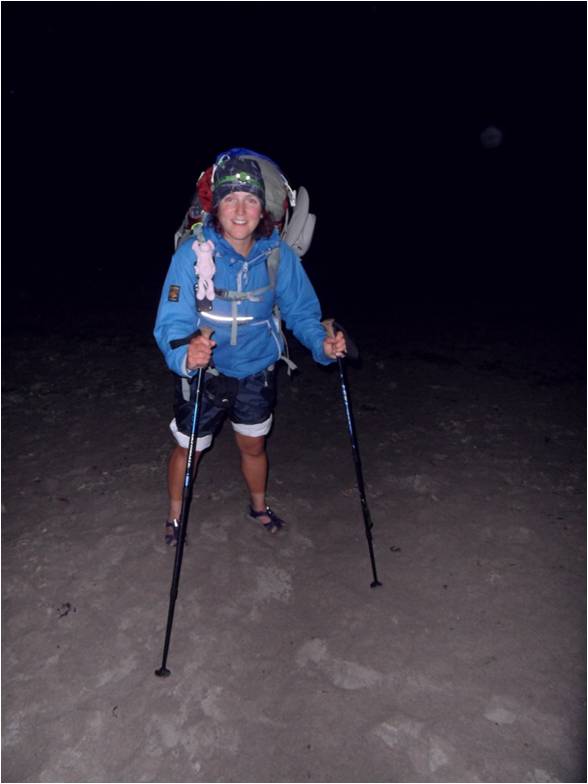
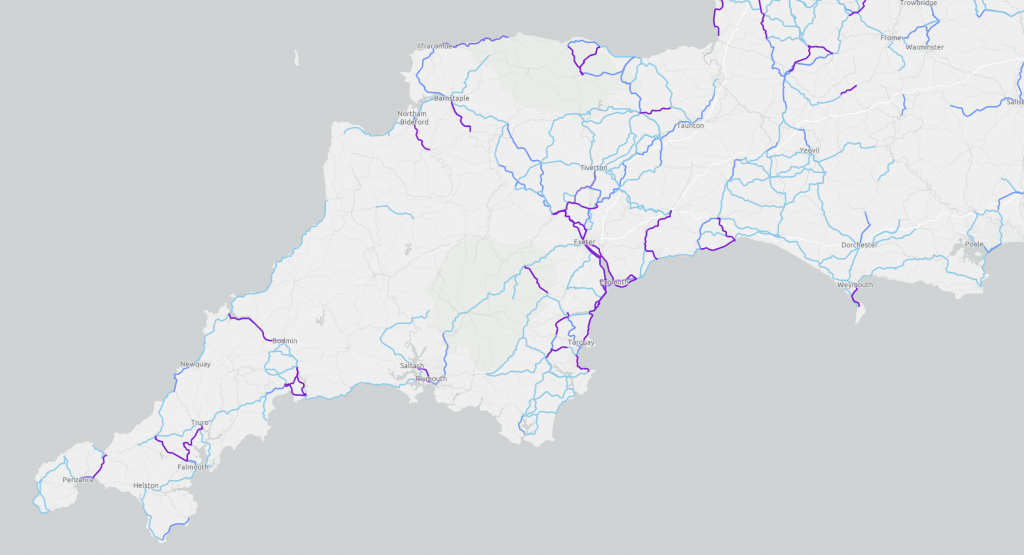
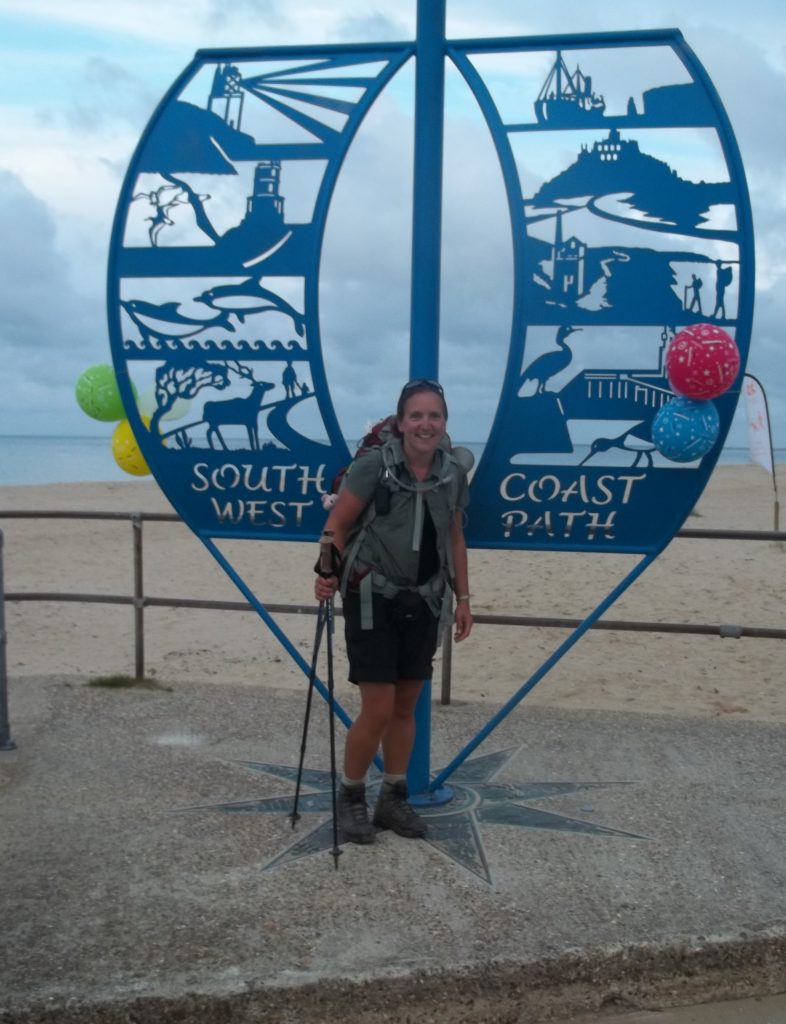
But it was dancing at me and going, Hey, here I am! So I picked up the book and stepped over to the counter and paid for it. And I knew. I just knew in that moment, despite all of the fears and all of the hang-ups, I’d do it, Great Britain’s longest national trail.
I was working as a teacher, and I was a bit concerned I wouldn’t be able to do the 630 miles in the six weeks summer holiday, so I asked for an extra two weeks’ unpaid leave, which was granted. So yes, it happened, and that was 11 years ago now!
I did it solo, and decided that I was going to wild camp – I was fashioning these things that would push me out of my comfort zone. And I was going to raise money as well. When you raise money for charity, people need to know that you’re doing it – who’s going to donate to a walk in the park?
I did it to mark my rite of passage into middle age, I thought it would be a one-off. But it actually changed the way I approach life and the way I approached work, the way I was with my family, the way I looked at things. I mean, just it changed completely everything.
Because it changed you? Your sense of yourself?
Yeah, totally. I was not prepared for that. I thought I was just going to come home and walk back into my life and get on with things, but it doesn’t work like that. For starters, you know, you’ve been living outdoors and then you expect to come back into four walls and sleep normally. You have changed, but what you’re coming back to hasn’t changed. It’s been an emotional journey, a mental journey, as much as a physical journey.
So were you dissatisfied with the life you had before? Had you spoiled it?
I just felt that I had grown and I understood more about myself. Nothing was ruined. Nothing had changed detrimentally. I had just started to realise that I needed more from my work. And my personal relationship did change as well and that was not something that I’d instigated. I didn’t see that coming. That’s a whole other story; it ended in 2014.
Perhaps there should be a health warning on walking: this may have really quite sizeable effects on all the rest of your life.
Yeah, but you know with hindsight they were all positive changes, even the relationship. I never would have wanted that to happen, but I benefitted from it, and my ex-partner probably has as well.
And now I am in a new relationship with somebody who I met on the South West Coast Path. We are married. We had a walking-buddy relationship, just friends, for three years and nothing more than that. And then we were at the wedding of somebody else who we met on the coast path and there was just some chemistry there and things started to blossom. And oh, my goodness. Yeah.
And now you only need to carry one tent. So, you know, it has real practical repercussions!
Definite benefits! And I should say, you asked me about changing my identity. There was something that happened that I hadn’t anticipated. In seven weeks of walking I dropped two dress sizes. I went from a size 12/14 down to a size 8/10, probably about a stone and a half of weight I lost. And that’s probably not healthy. I was eating well and, you know, eating as many cream teas as I possibly could! But with the ascent and the descent involved (the equivalent of climbing Everest four times!), the SWCP is a lot of hill walking.
I came back home, due to go back to work within a week and all of the clothes that I would normally wear for work, nothing fitted me. I’d even bought new clothes that were on sale, thinking, oh, that’ll be great when I get back to work. And so they were hanging in my wardrobe, with the tags still in there, and they didn’t fit. And I had a meltdown as a result of that because it was like, well, what am I going to do? I can’t go and buy a whole new wardrobe of clothes. I think a lot of us identify who we are by what we wear. You know, it’s the colours, it’s the style. It’s just our comfort.
And with teaching I guess it’s a bit like armour?
Yes. I had a real hard time with that. When I went back to school, people just kept staring. They’d either look away or say, Wow, look at you. You look great. Actually, did I not look great before then? And there’s all that thing about weight loss. And I wasn’t overweight, but I was… fuller. Laura, my daughter, was 16 and I ended up going to school in her clothes. And I suppose from that side of things, I actually felt quite good. Being 40 and going to work in my 16-year-old’s clothes!
But as a lot of people know who have been on longer walks, that weight loss never stays with you. It gradually creeps back up on you.
And did you feel in that new identity that you had underestimated the pre-40 version of you?
Yes and no. I mean, it was never dull, but I gave myself a kick for not doing it sooner. We’d had some good times, and were doing stuff outside. But just that self-talk, that limiting belief that I’d had, that I wasn’t capable. I was cross with myself for believing that and not testing it sooner.
And since then you’ve done so much! You were the first woman to walk the Wales Coast Path? Plus the Pennine Way, the Camino de Santiago, the Mendip Way, Hadrian’s Wall and Wainwright’s Coast to Coast?
Yes, those were the bigger ones, but there have been all sorts of smaller challenges I’ve had to fit in as my life has changed. As I got older my parents got older too and I realised I wasn’t going to be able to take off on an annual big pilgrimage.
In 2017 we did the Pennine Way. That was a tough one. 16 days of rain in 20 days of walking. My dad’s health was failing and my mum was also becoming more frail, and I just thought, there’s no way I can go off for three weeks plus.
Adventure challenges for when life gets in the way
So I gave myself a challenge called the 100 Mappy Days – to walk 100 different routes, over a mile each, using a map or a map app. It was an absolute blessing because it meant that if I was with my parents and just had half an hour to spare, I could do a walk. It ended up taking two years to do the 100 days because we lost dad at the end of that year. It just helped me to keep my sanity because I had that focus of going out and walking.
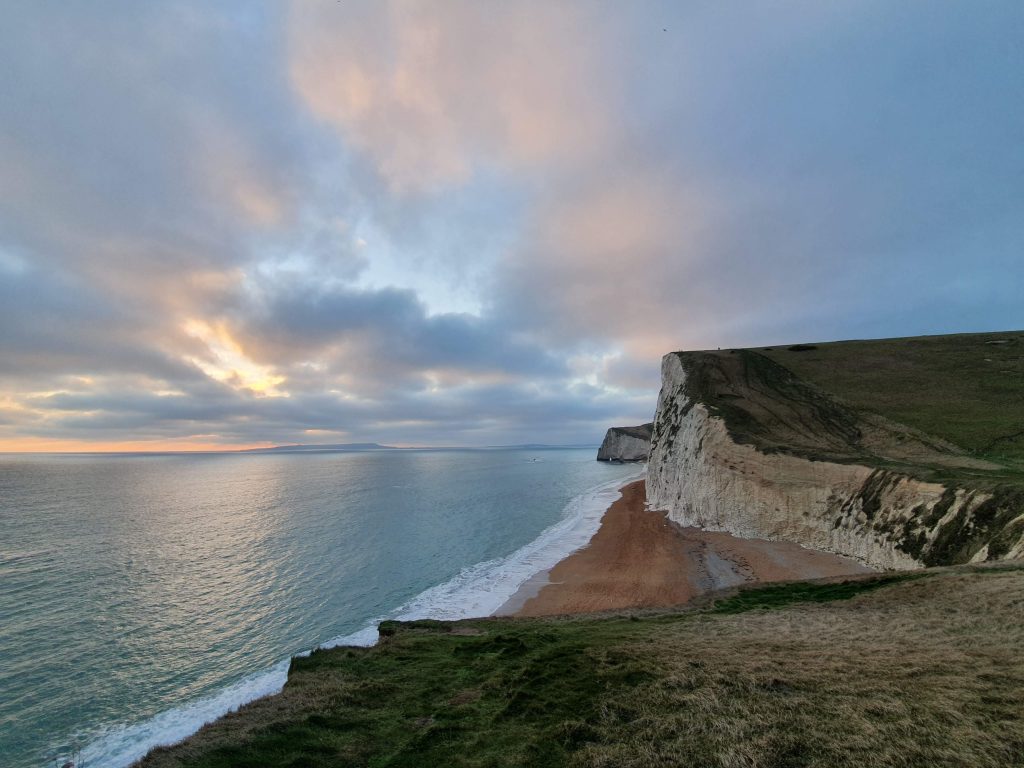
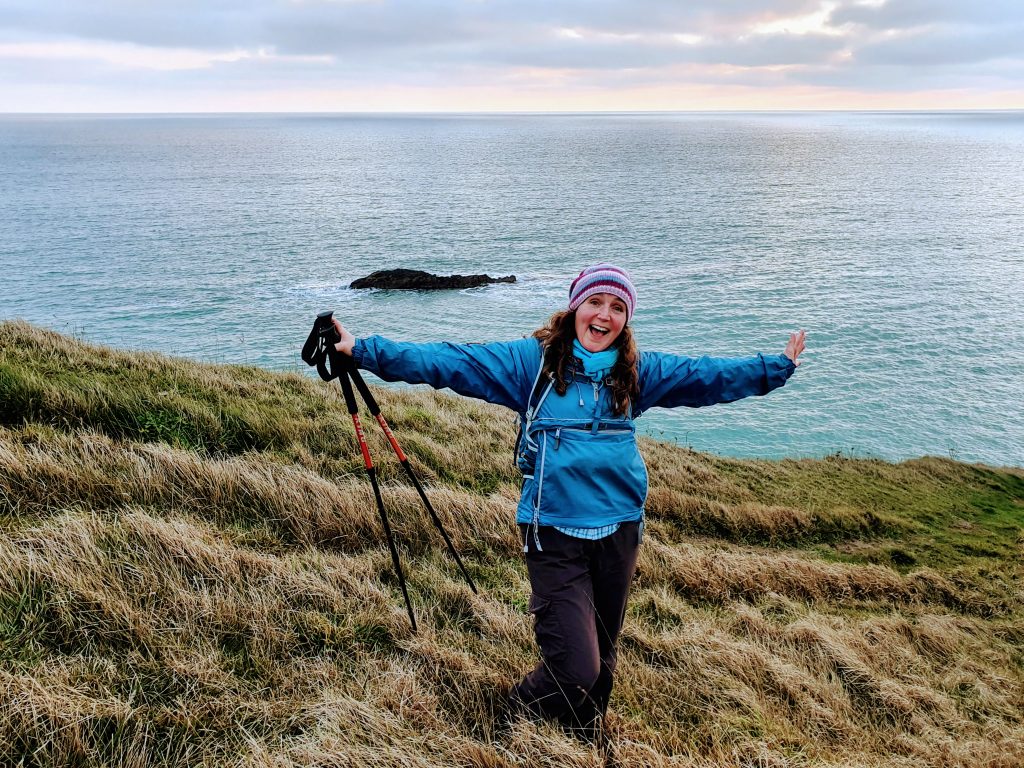
Was the idea of setting the challenge that you couldn’t get out of it?
Yes, it was definitely about accountability. When a lot of things are overwhelming me it’s very easy to ignore what I know is my time for me, my outside medicine.
So although it’s those big long routes that get the attention, arguably it’s the way that you get that adventurousness – or that mindfulness maybe – into your everyday life that’s possibly more important?
Yes. Don’t get me wrong, I think I still crave the big long walks because it takes at least a week to go through a process of shedding all the life stuff.
And then you start getting into the survival mode. One foot in front of the other. People say this all the time, but it is like a meditation and I find I solve problems when I’m walking. I come up with the best ideas, for artwork, for the podcast, for new adventures.
Walking to 135 canal bridges and back
And right now you’re doing the Monmouthshire and Breconshire Bridge Bagging Challenge?
Yes – bit of a mouthful, the Mon and Brec! Essentially it was a lockdown-proof challenge where I decided, right, we’re on a 35-mile stretch of canal by the boat–
You live on a narrowboat, we should say, so the towpath is your back garden.
Yes! And there are, I think, 135 bridges, but it’s only a 35-mile landlocked canal. And so I thought, okay, in that 35-mile stretch, how long is it going to take me to walk from my bridge where I’m moored to the next one and back again and then to another random one? Not in order.
So I created a spreadsheet, as one does, that has all the bridges on. If I’ve only got an hour I can see that, say, bridge 94 might only take me 45 minutes there and back again. What’s got tricky now is I’ve done all of the bridges that are in the five/ten mile range.
We’re about two thirds of the way down from Brecon and a third of the way up from Pontypool. So the longest day will end up being 42 miles, I believe. 21 there and 21 back.
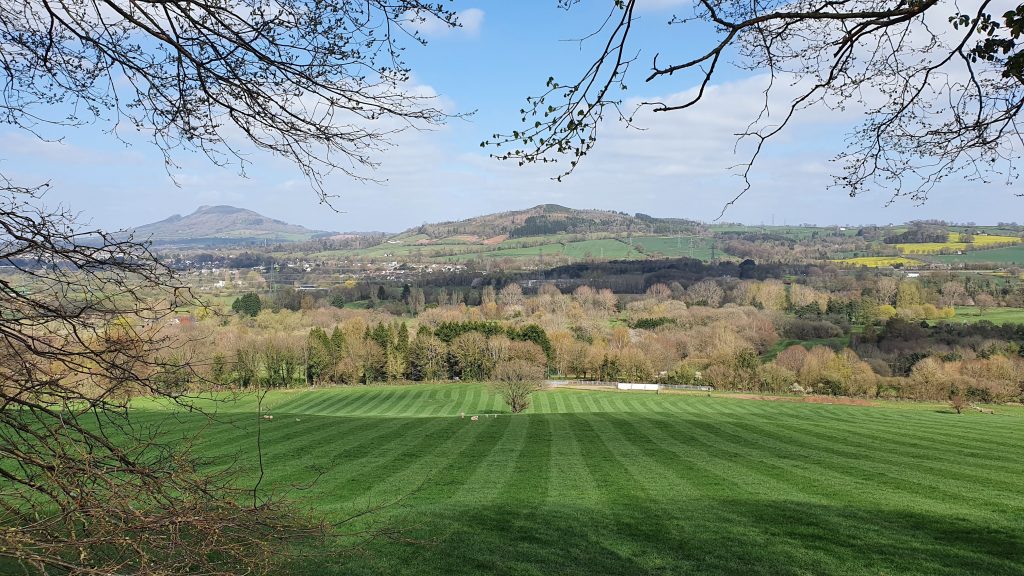
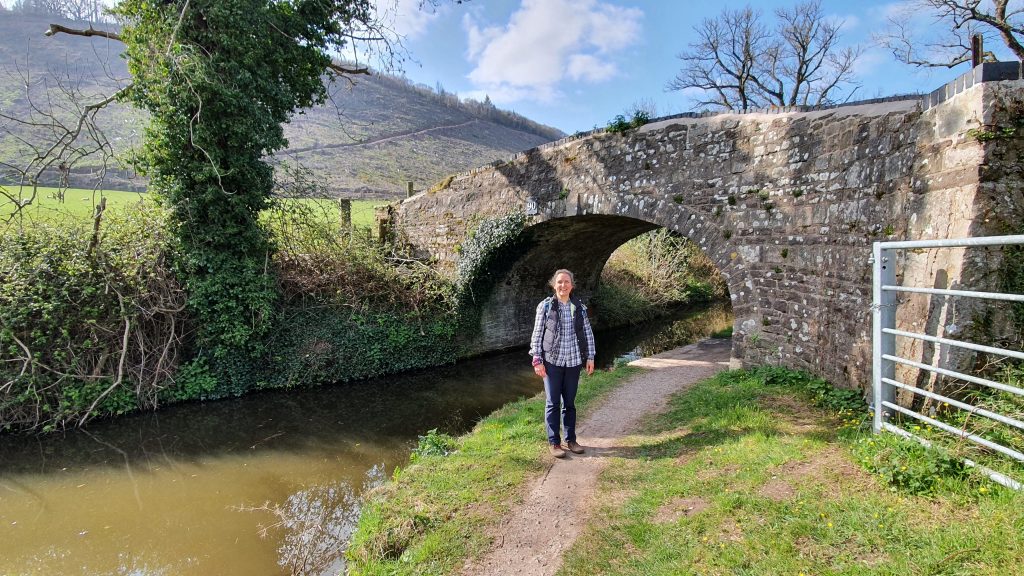
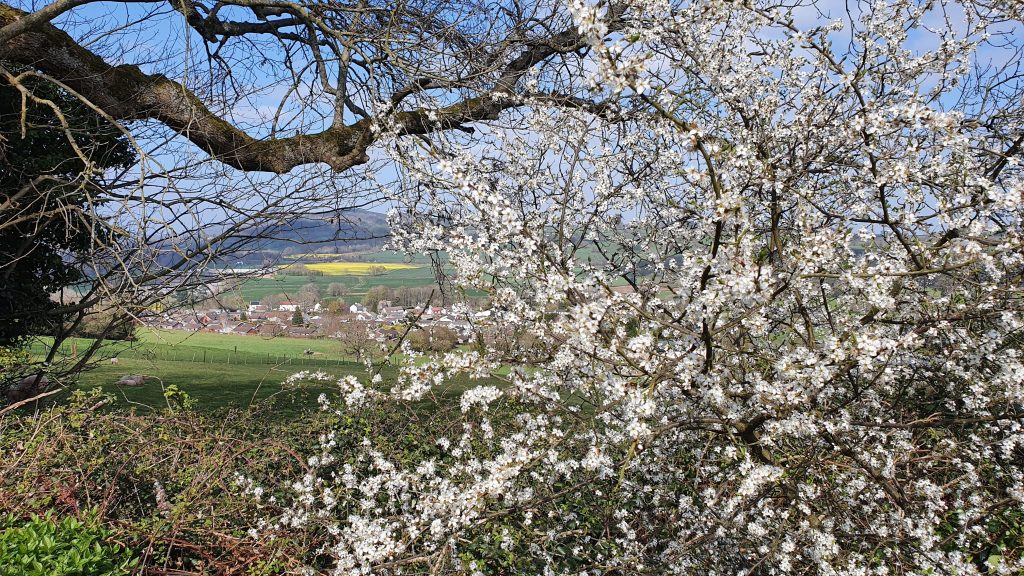
And then the second-longest day could be just a few hundred yards shorter, to the second-furthest bridge? You’re retracing your steps over and over – is there something ritualistic about it?
Yes, there is. And very intimate as well. I had quite a few people say to me, oh gosh, is it not going to be boring tramping over the same ground over and over again? But actually, it’s not. For starters, you meet different people. Your mood is different, so you experience that walk in a completely different way. I’ve done about 26 bridges now, so I have seen the towpath on numerous occasions, 26 times in different seasons. Trees have come down.
So if you were to walk past all of the bridges once, it would be a 35-mile walk. But to go to each bridge and back and then the next bridge and back – how far is that altogether?
3412 miles. And my husband didn’t believe me. He said, come on, your maths isn’t great. I checked it and double checked it and it’s on the spreadsheet. And oh, my gosh, I didn’t believe it either, but yes, it is. 3412 miles!
My longest day so far was actually during another challenge that I did in June last year – the June Daily Jaunt – where I challenged myself and other people to go out on a walk every single day of June, doing different things. And one of those things was to walk further than I’d ever walked before. For some people that’d be great because maybe they have walked five miles, so they get to walk six miles. Unfortunately, when I was on the South West Coast Path, we walked a 30-mile day.
So I walked up to Talybont and back and that was 32 miles. I had very tired feet, but a very satisfying day. And eventful! I rescued a bird out of the canal with a holidaymaker. I helped an elderly couple who had got their canal boat wedged across the canal in a real Suez Canal manoeuvre as of last year.
So even if I go up to Talybont again, I know it’s going to be different next time. I’ve got friends that have walked the Camino 10, 15 times and they say it never is the same walk. It’s never the same pilgrimage.
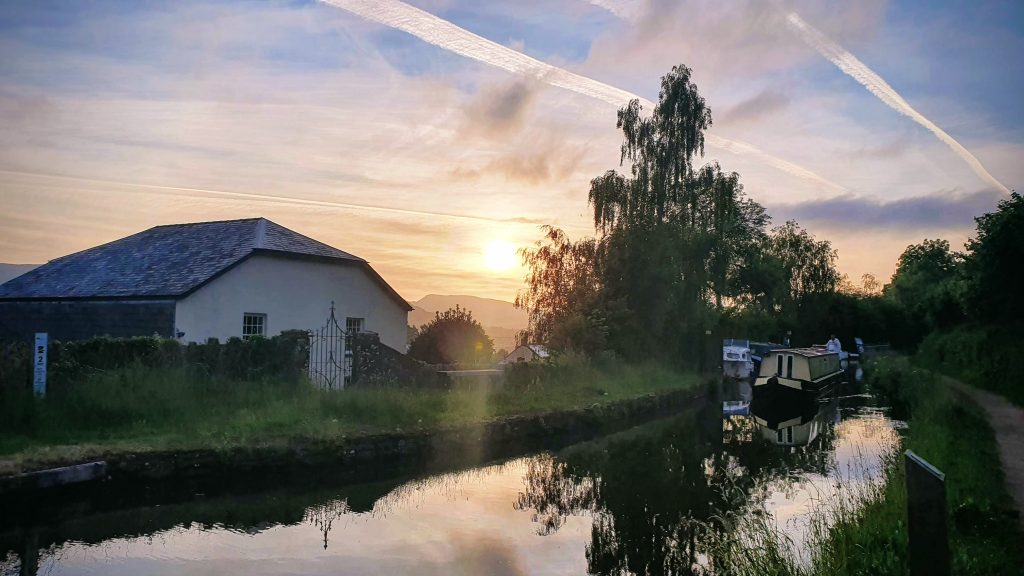
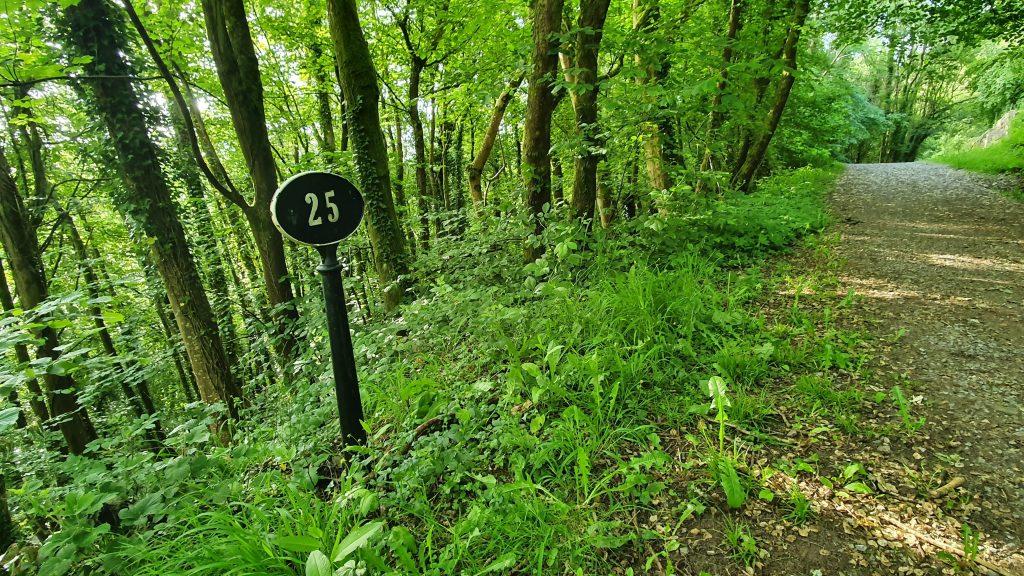
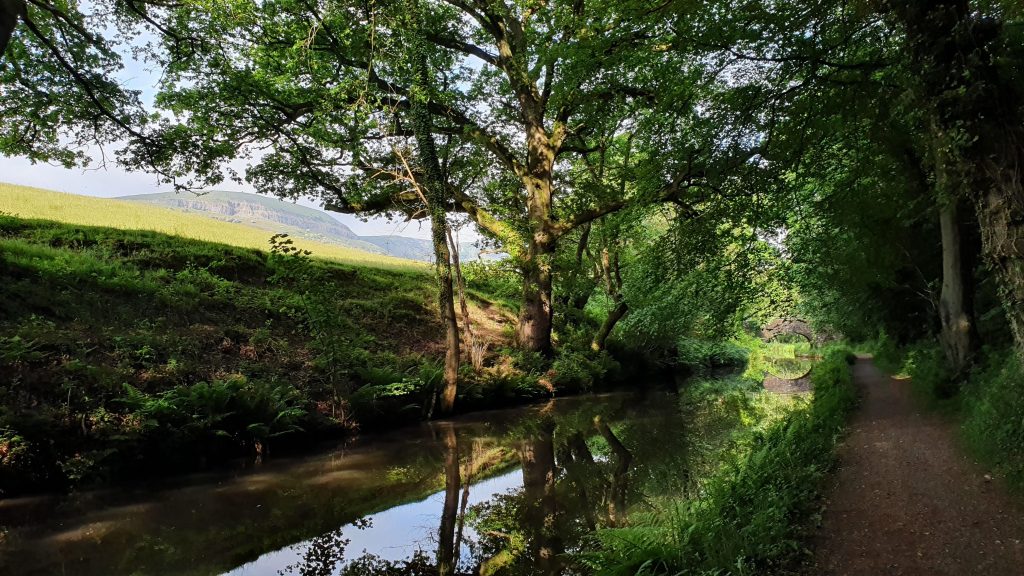
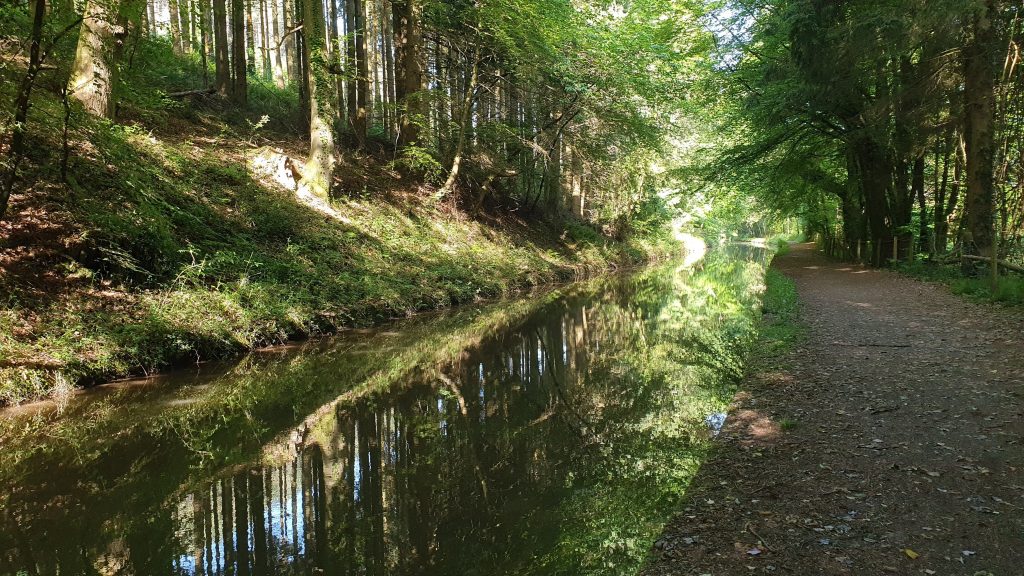
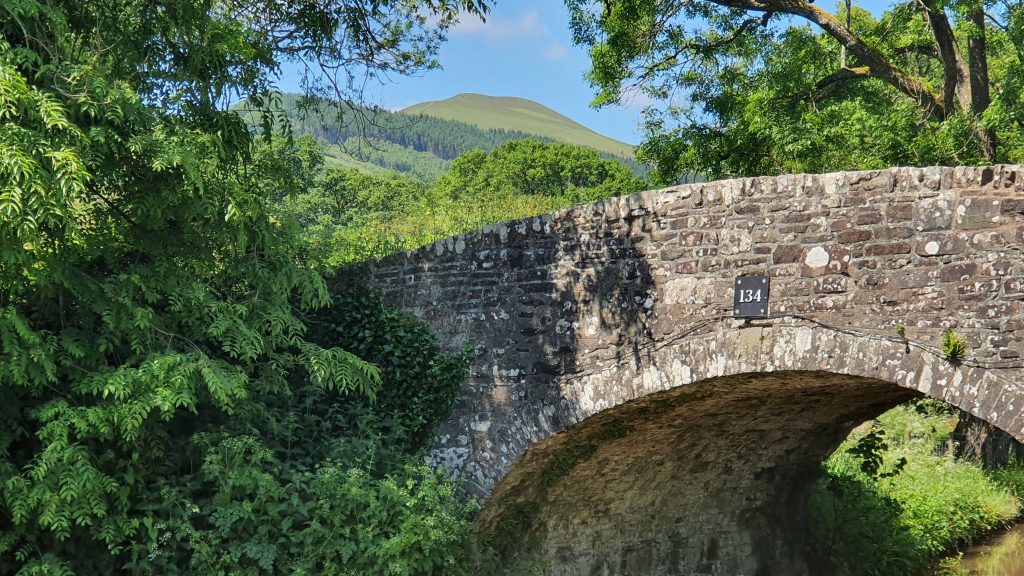
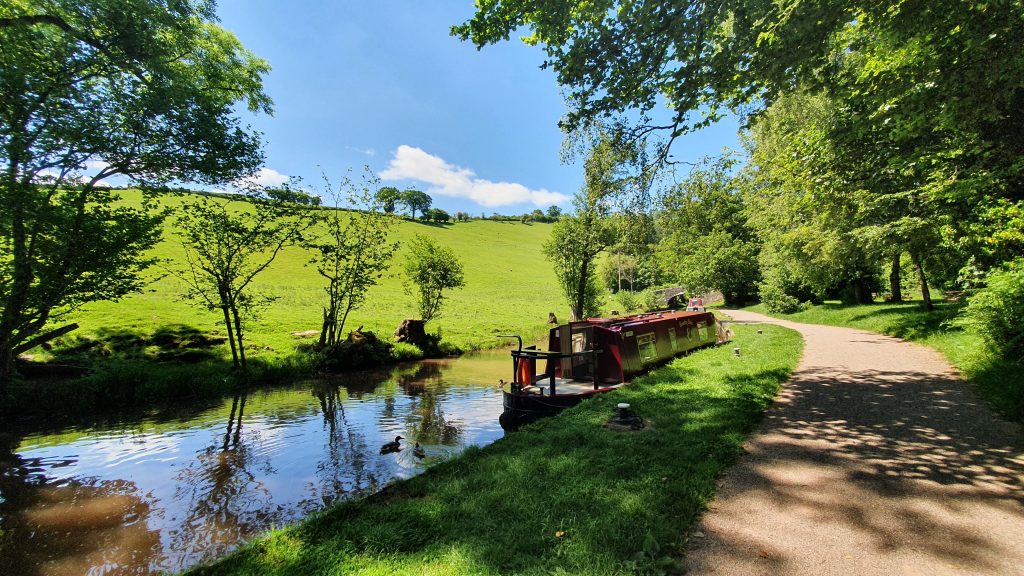
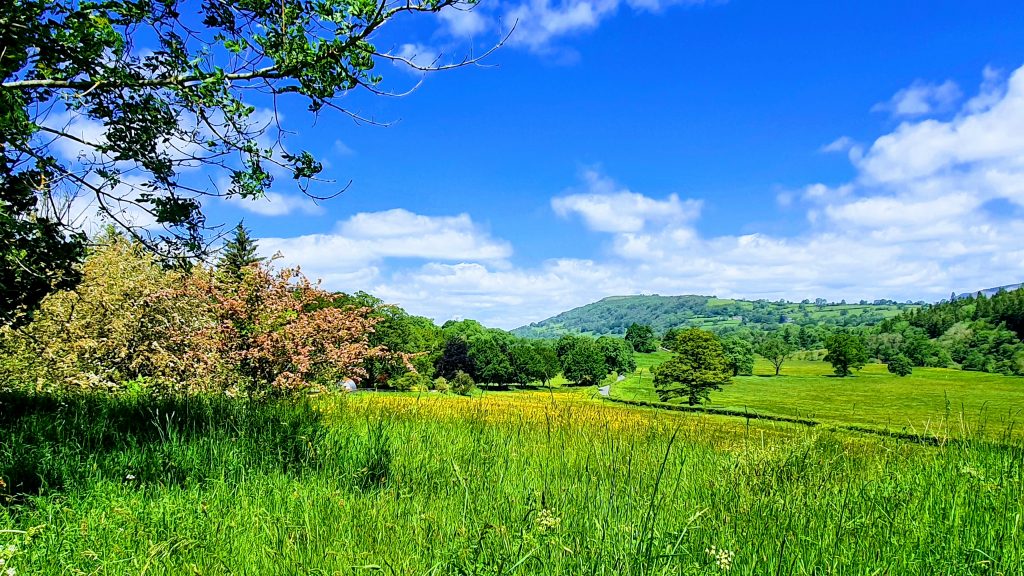
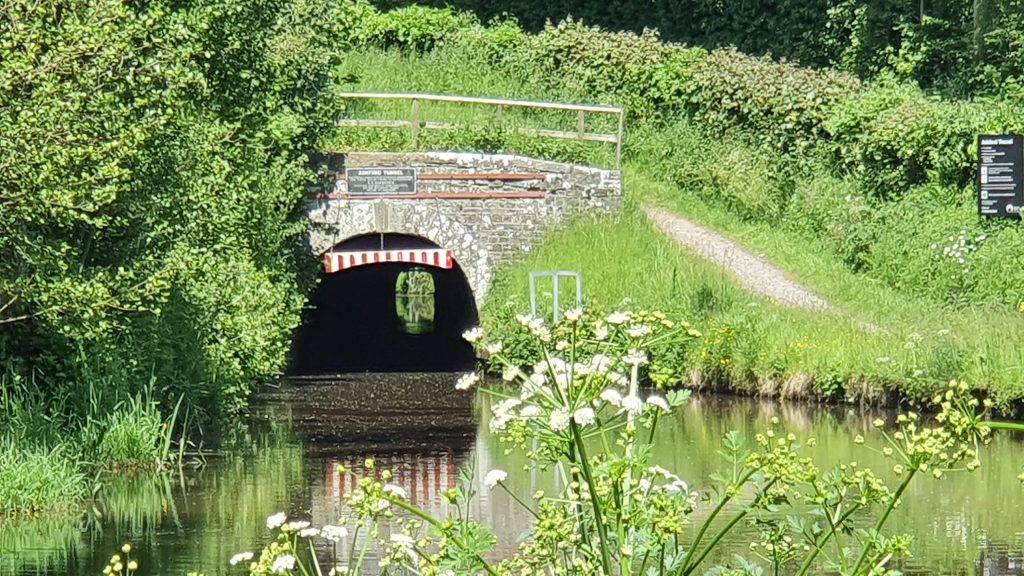
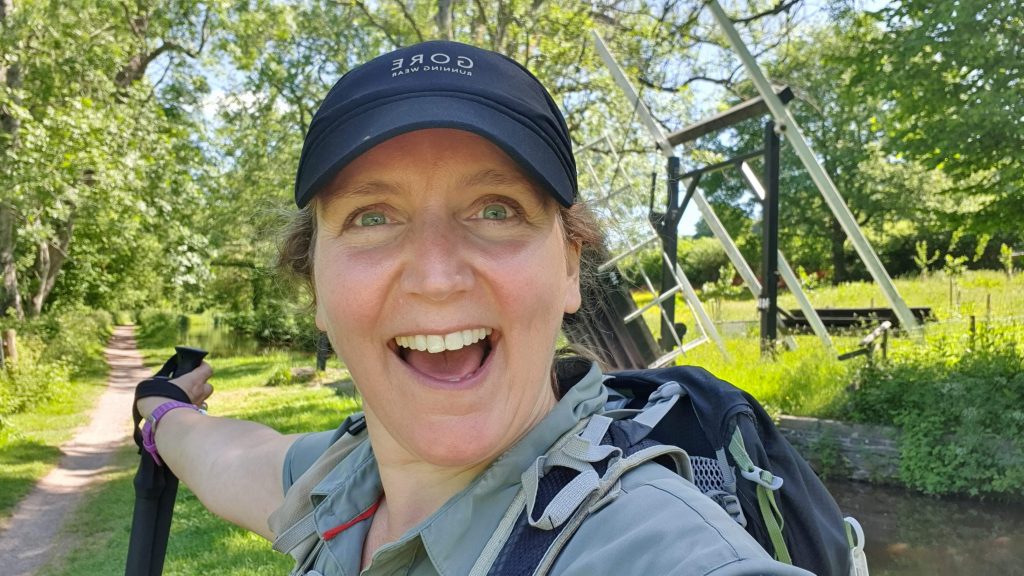
It’s really interesting. And especially thinking about the Slow Ways mission – it is creating tools such as routing that people can use to do unusual long walks that they may just do once. But actually, I think where it’s really exciting is in joining you up with your neighbouring town or village in such a way that transforms your understanding of the landscape you live in. So hopefully you’ll do a walk over and over again, and get to know that piece of land in the way that people have known land throughout history. A much more repetitive, much more purposeful sort of way, I guess, walking to market, to visit family or whatever.
When I lived in four walls I had a huge map of the British Isles on my kitchen wall and it was probably about six feet tall. I would wish that I could walk this route or that route, but the route I had already walked – I had a completely different relationship with on that page because I had generated memories with that part of the map.
Same with childhood stomping grounds. I remember the walks I used to do with my dad: there’s a place he’d show me where the sloes grew and another area where there was a covered bank with trees that we used to call that the jungle. I walked that place. Countless times. It’s knowing it in an intimate way because, you know, you recognise where the path bends and where the ditches are. Even down to knowing where to put your foot on a stile, because that particular stile is a little bit wobbly.
That familiarity! Like knowing how to avoid a creaky floorboard on your way to the loo in the middle of the night, in your own home. That intimacy outdoors widens the sense of what your own home is.
Perhaps it does, and you find you’re doing it unconsciously or subconsciously.
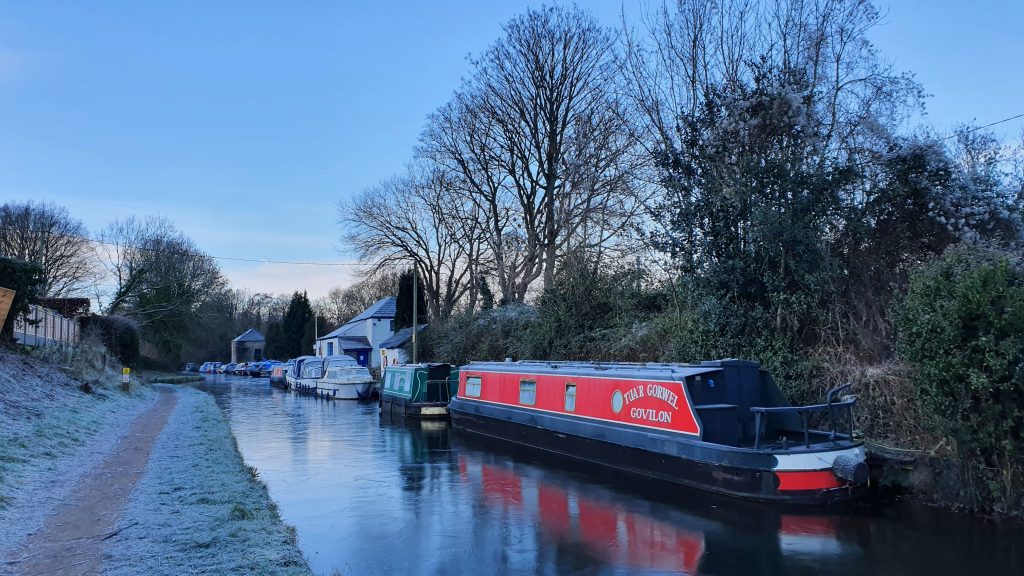

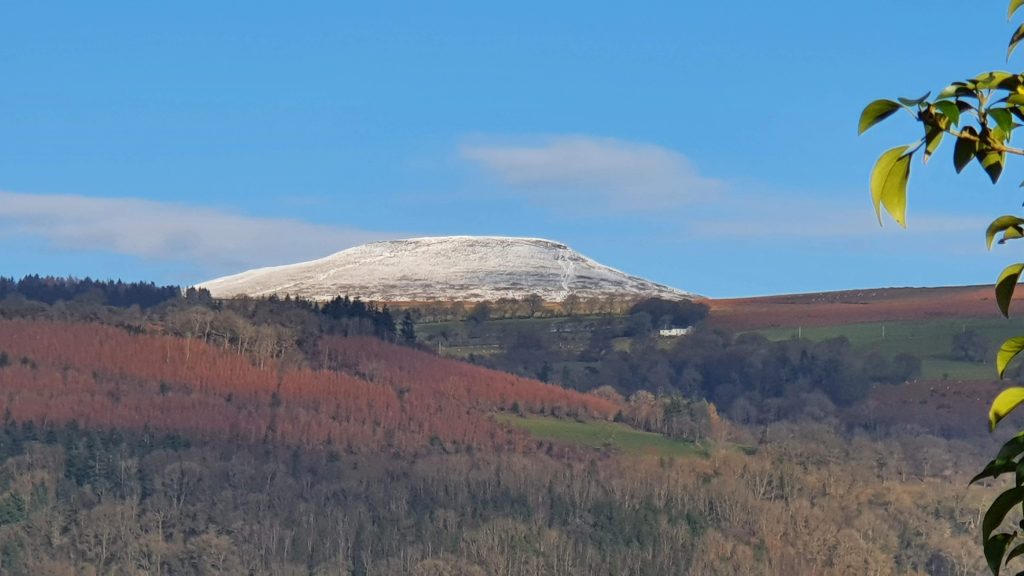
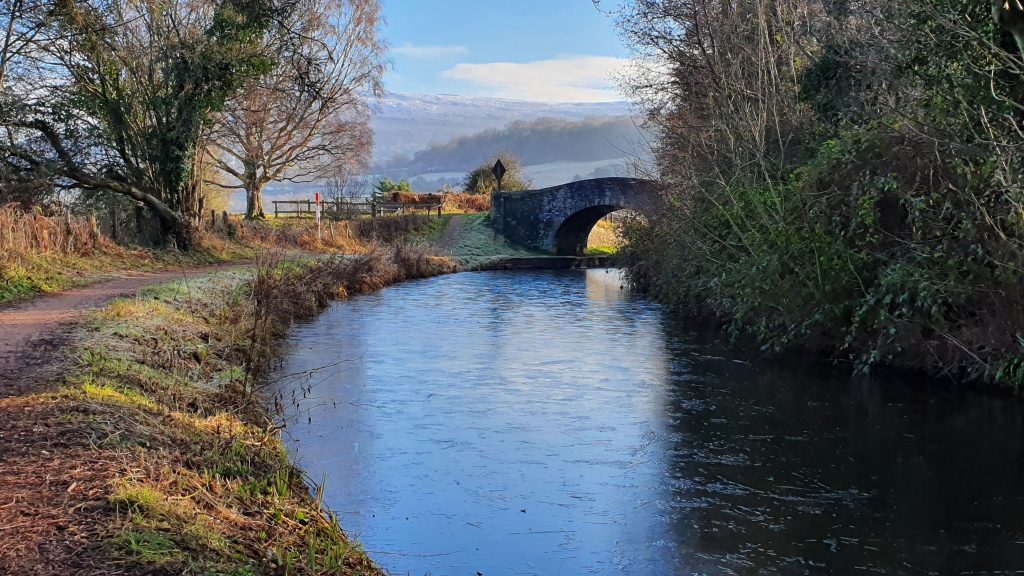
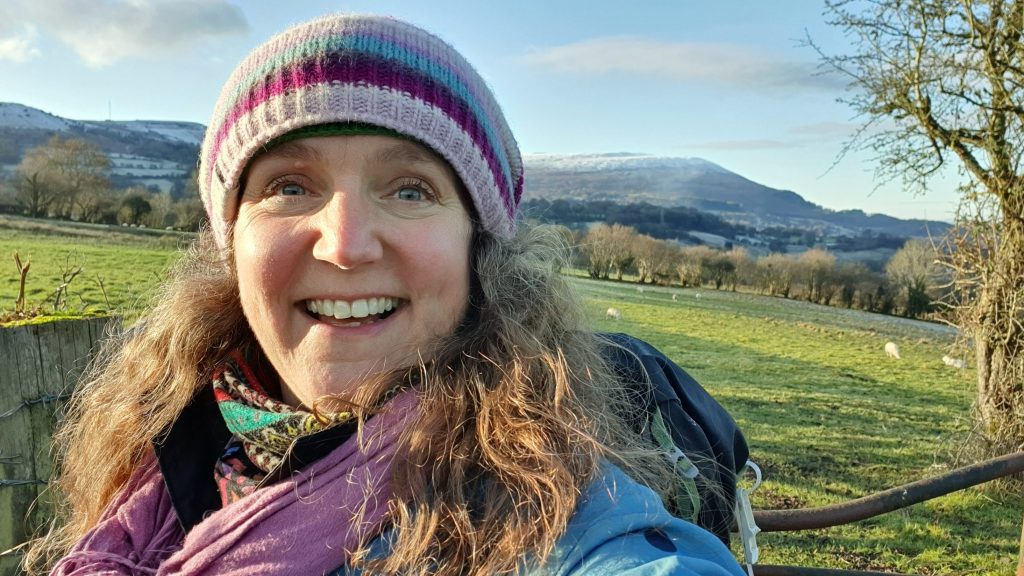
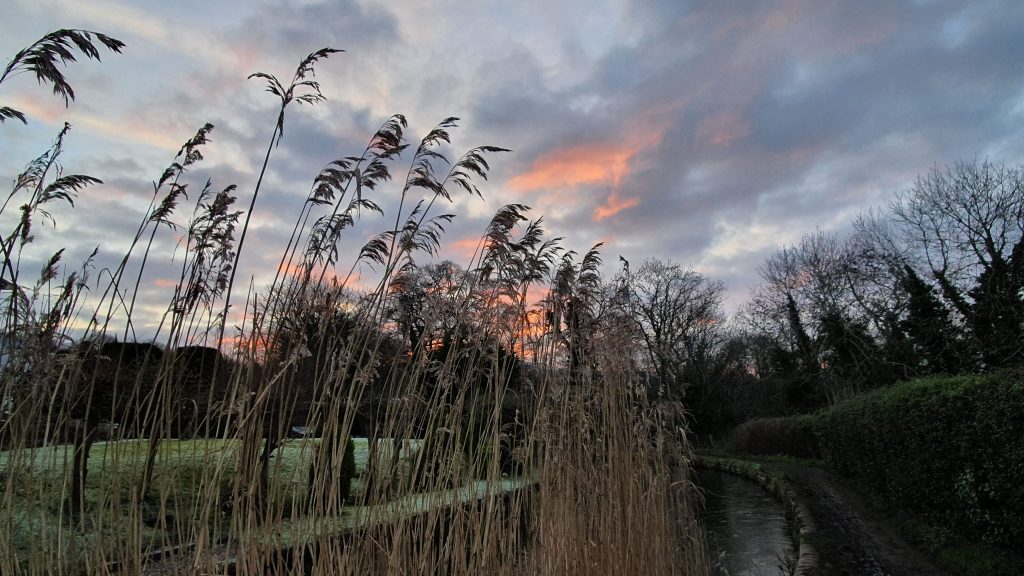
Perimenopause and achy joints
Over the last few years, since you started HeadRightOut, you have complemented your own adventurous walking life with hearing and sharing people’s stories, around the theme of getting older.
Yes. I knew that I wanted to encourage women to head out of their comfort zones.
But I also had begun to realise the challenges that we were facing, specifically as midlife women. So with what I now understand to be perimenopause – I didn’t realise at the time, but I’d started to retreat and not feel able to get out walking or cycling. Whereas six months ago I was walking up and down Blorenge and Sugarloaf a lot, all of a sudden I felt I couldn’t even walk along the towpath because my joints were hurting so much.
As I started looking into it I realised that these were common symptoms of perimenopause and there are 35 or 38 different symptoms. I spoke to Jo Moseley on the podcast and she had pretty much 99% of those symptoms, a really tough time going through perimenopause. But she’s come out the other side and has a really fulfilling life in the outdoors.
I started HeadRightOut to encourage women, and benefit in each other’s experience. There are times now where I could quite easily retreat indoors. Imposter syndrome still wreaks havoc with me from time to time. And so by hearing those stories from other women, from making that personal connection, I feel inspired to get out there and keep doing what I’m doing.
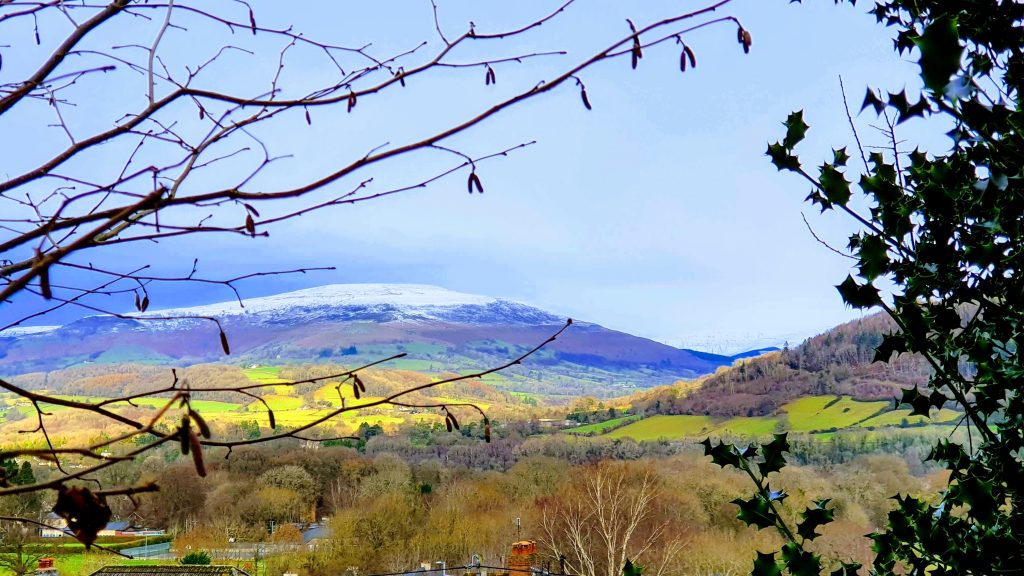
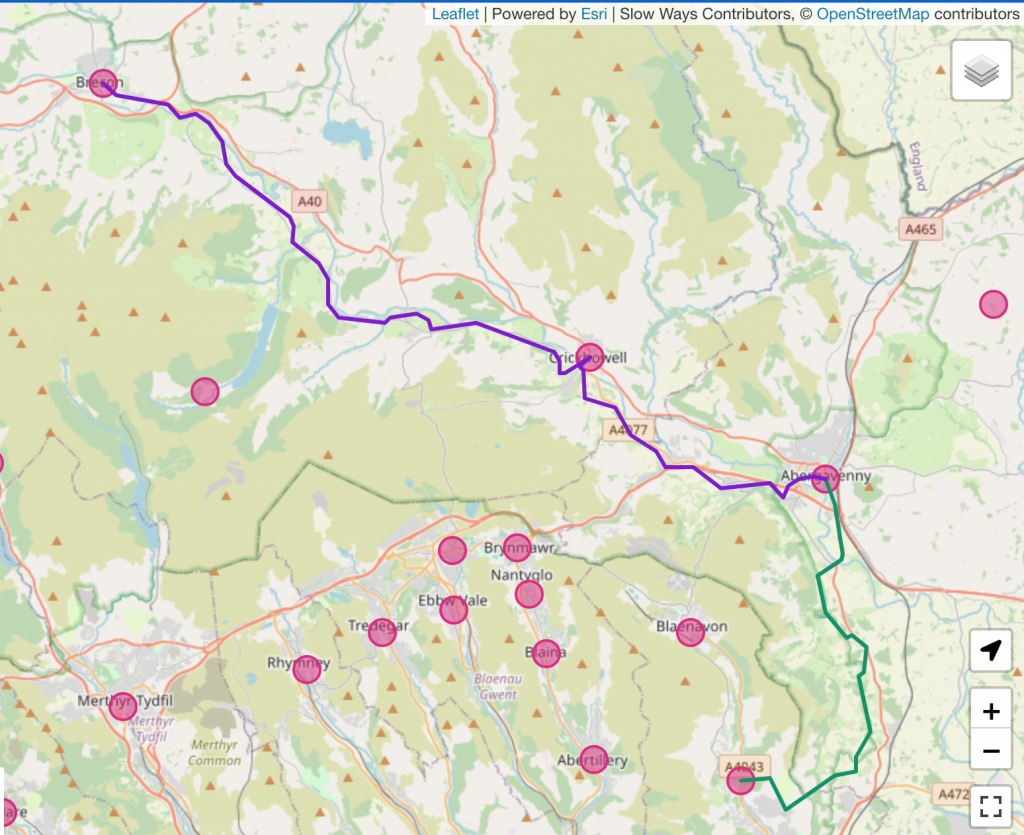
Strength in numbers. In an area where people are sort of complicit in their own retreat? It’s not just that culture doesn’t want to hear from older women – the Arlene Phillips factor – it’s also that older women lose confidence to put themselves out there?
Yes. I think it’s a hormonal thing that even the most daring of women have. From what I can gather they have experienced this sudden dip in confidence as their hormone levels change, as oestrogen levels drop. And they start doubting their ability or they feel like they need the reassurance of having somebody to go with them.
And that’s fine, to do these things with other people, but it’s when you start fearing doing the things that you’ve always done for yourself before. Suddenly you become dependent as opposed to independent. And I think that’s what I’m trying to encourage women to face and to challenge themselves with, because my resilience has grown tenfold as a result of doing these challenges, especially the solo ones.
I can guess at the most common barriers. Empty nest, or becoming a carer, or retirement – these changes in identity.
Yes, it’s those big life changes and one of them is definitely children leaving home and losing your identity. For some it’s relationship changes. It might be divorce or sometimes death. Perhaps career changes – somebody might have been in a job for 20 or 30 years, and as other changes happen that gets you thinking about the job as well. And the whole elderly family commitment, that was something that hit me quite hard and I hadn’t realised that was going to be a thing.
It’s the method, the manner of doing it is as important as the doing… thereof, isn’t it?
Yes, and just hearing women’s voices telling their stories.
Well, thank you very much!
- Read part two of this conversation for Zoe’s top books, podcasts and online groups to help you springboard into outdoor adventurous walking!
- Inspired by Zoe’s tales of the South West Coast Path? Many of the Slow Ways in Somerset, Dorset, Devon and Cornwall are stretches of the coast path, so you can have the experience and also add your reviews in to project Slow Ways! Browse the paths of the south west on our journey planner
- Hear Zoe’s podcast with Hannah here, on Slow Ways, trying to be adventurous despite children, and walking around Wales with a donkey called Chico
- For more inspiring middle-aged people on this site, read about Tim Ryan’s upland walk across Wales, see Lynn Jackson’s lovely drawings of her Slow Ways walks, or read Kate Monson on her family history in intriguing mudlands of Canvey Island